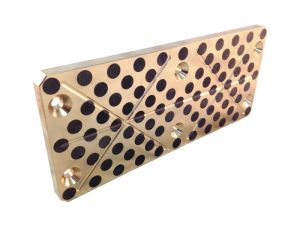5 Safety Rules To Be Mindful of When Working With Strapping Tools

There are many applications for metal strapping and other stainless steel tools. However, whichever industry they’re used in, workers need to make sure they’re safe when working with them. The function of the component means you have to stick to specific safety regulations, but even though they vary, there are some general safety guidelines you should implement.
Let’s take a closer look at them:
#1. Always wear safety gear
The field you work in will determine the safety equipment and gear you’ll need, but if you’re handling steel strapping, you can’t do without protective gloves and steel-reinforced safety shoes or boots. Safety goggles are also essential, for both the operator and bystanders. Standard gear to be worn includes long pants and a long-sleeved shirt. You don’t want to wear any loose clothing, accessories or jewellery when you’re working with steel strapping either.
High-visibility clothing is also recommended if you’re working offsite such as on a roadway. Visibility is a non-negotiable element of safety.
#2. Use the correct tools
When cutting strapping, stick to cutters designed for this task. It can be tempting to use other tools you’ve got on hand, but steel strapping cutters will rule out the risk of accidents. When you’re using them, don’t cut the band when it’s under tension. If the strapping springs back you could be hurt.
For cutting vertically tensioned strapping, it’s advisable to position yourself to one side of it. Hold the strapping against the item it’s holding and cut at the point just below where you’re holding it. The strapping will rebound downwards, keeping you safe from any rebound. If you need to cut strapping that’s tensioned horizontally, try this. Standing with your body against the load, cut to the right of your hand. Again, the strapping will fall to your right, preventing any rebound injury.
#3. Don’t use strapping to lift a load
Remember the role of steel strapping. It’s designed to secure a load. It is not a handle and should never be used for this purpose. It’s true steel parts are designed to be stronger than they used to be, but it’s still not safe to rely on them to hold a heavy load that’s being lifted. It’s never recommended to use the strapping to lift or pull a load. Doing this could damage the load the strapping is holding together, but it also puts your safety at risk. The security of the load and your physical safety are more important than taking a shortcut.
#4. Don’t use staples
If you’re using strapping, your goal is to ensure a shipment stays secure during transport or unloading. To improve this, you may feel that stapling the load will give it additional support. Steel is very strong, so you don’t need to use nails or staples to secure the load further. Doing this could weaken the steel strapping. Plus, if these metal items become dislodged from the load, they could pose a further safety hazard. In certain circumstances, using staples or nail may be necessary, but they should only be used with pre-punched metal strapping.
#5. Learn to lift correctly
There’s a protocol for lifting a load that’s secured with steel strapping. First, check the strapping is secure, and there aren’t any rough edges, nails, or splinters. If the load is heavy, ask a colleague to help you pick it up. If it is manageable on your own, get your feet in a stable position and stand with a straight back before you pick it up. With your body centered over your feet, pick up the load and pull it close to you. Lift it using your legs, not the support of your back. Avoid twisting your back when you move; it’s safer to move your feet to get this motion.
Using these five tips when working with metal strapping will keep you safe and injury free. When possible invest in a battery powered strapping tool which reduces the likelihood of possible injuries.





